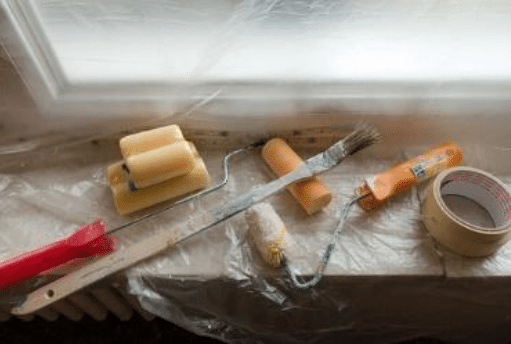Accessories used in plastering are equally essential. Without these accessories, a plasterer may not achieve the desired results. One example of a vital accessory used in plastering is plastering tapes. Tapes are used to connect plasterboard, mark areas for plastering, and secure protective material over furniture or appliances. There are two types of plastering tapes used in plasterboard joints: scrim tape and paper jointing tape. Here is a comparison of the two kinds of plastering tapes and how to choose a suitable option for your project.
Scrim tape
The defining characteristic of scrim tape is that it is made out of fibreglass mesh. It is a relatively recent innovation developed in the late 1980s. Fibreglass threads woven together produce the mesh used in scrim tape. Similar to other types of tape, scrim tape has a self-adhesive side. You can stick it directly to a plasterboard joint without using a layer of jointing compound. It is convenient to use and preferred by novice and professional plasterers alike.
The open mesh characteristic of scrim tape allows jointing compound to flow through and directly onto the plasterboard. This feature helps to increase the strength and structural integrity of the joint. Another advantage of scrim tape is that it does not slip or fall out of place. Scrim tape also does not create bubbles in the joint area, enhancing the look and feel of the surface.
Paper jointing tape
Jointing tape made out of paper is also called drywall tape. Unlike ordinary paper tape, jointing tape has a crease running along its length used in reinforcing the internal corners of plasterboard. Paper jointing tape can be folded crisply to create 90-degree corner angles; a feature of paper jointing tape which makes it superior over scrim tape. Unlike scrim tape, paper jointing tape is not as strong. However, it is cheaper than scrim tape and comes in long rolls. Paper tape remains a popular choice for professional plasterers.
One downside to using paper jointing tape is the extra layer of jointing compound required to hold it up. The process of adding jointing compound can be time-consuming as well. Because of this, novice plasterers may find it more difficult to use for DIY projects. Professional plasterers have the skill level and expertise in using paper jointing tape.
Choosing the right plasterboard jointing tape
Whether scrim tape is better than paper jointing tape is subject to the preference of the user. In general, professional plasterers prefer paper jointing tape because they have the skill to use it. However, scrim tape is also becoming popular because of its convenience.
In deciding whether to use scrim tape or paper jointing tape, you need to consider the amount of time you have to finish the project. You also need to consider how skilled you are in plastering. If you are buying tape for a DIY project, scrim tape should be more efficient and easier to use. For commercial and large-scale constructions, on the other hand, paper tape is preferable due to affordability in large quantities.
Comparing the properties of each type of tape, you can also say that scrim tape is better for flat joints while paper jointing tape is suited for corner joints.





